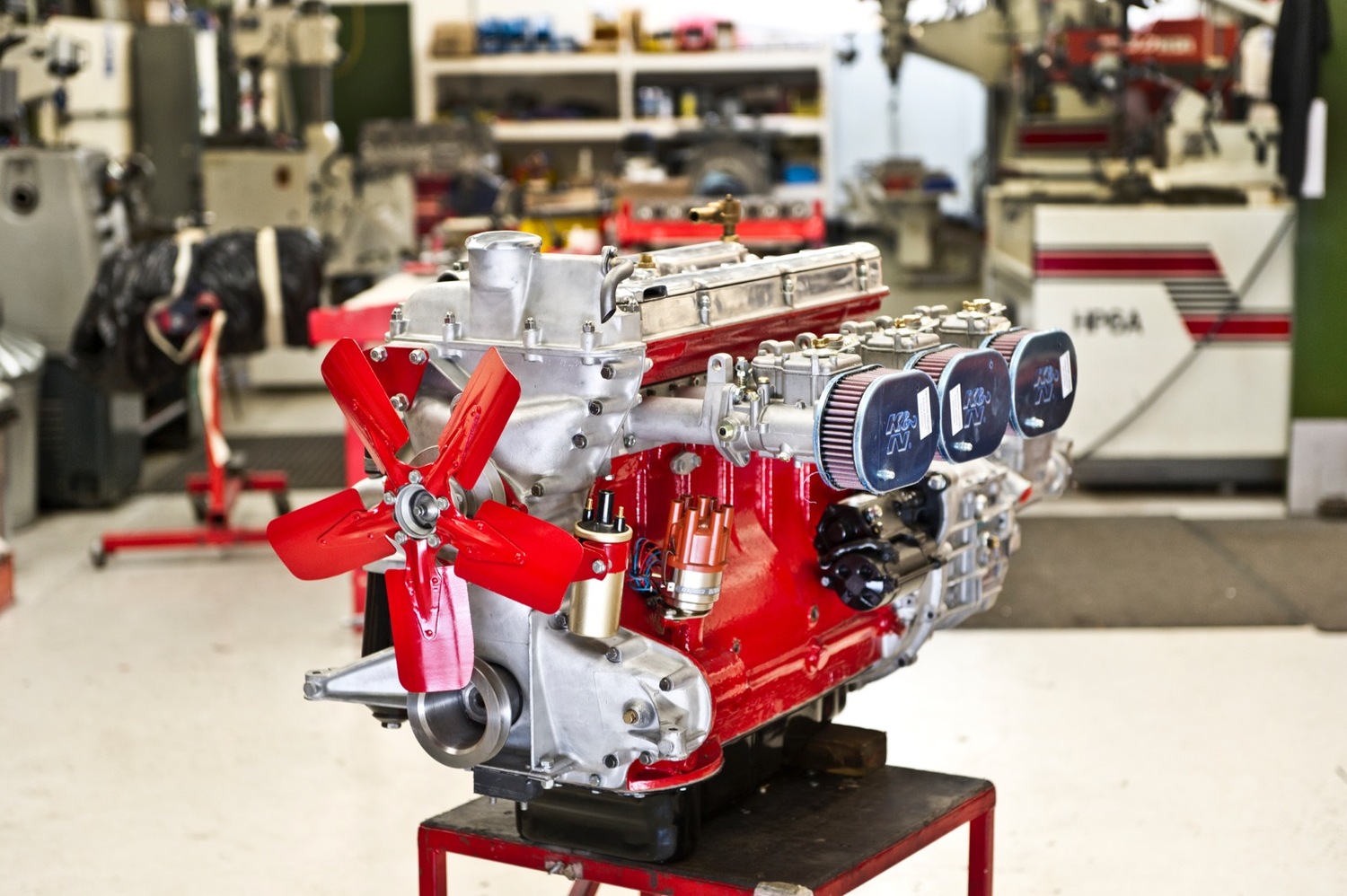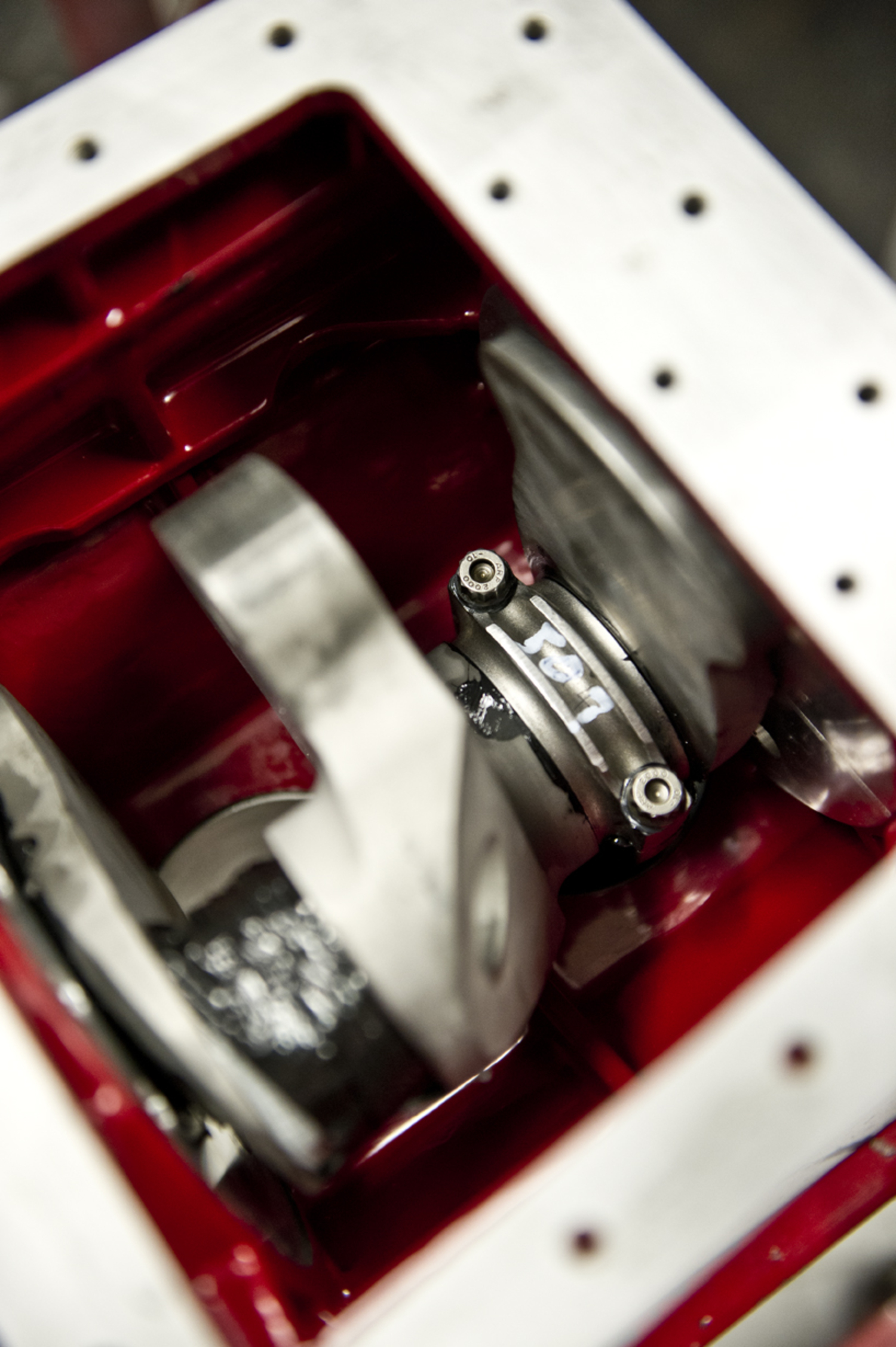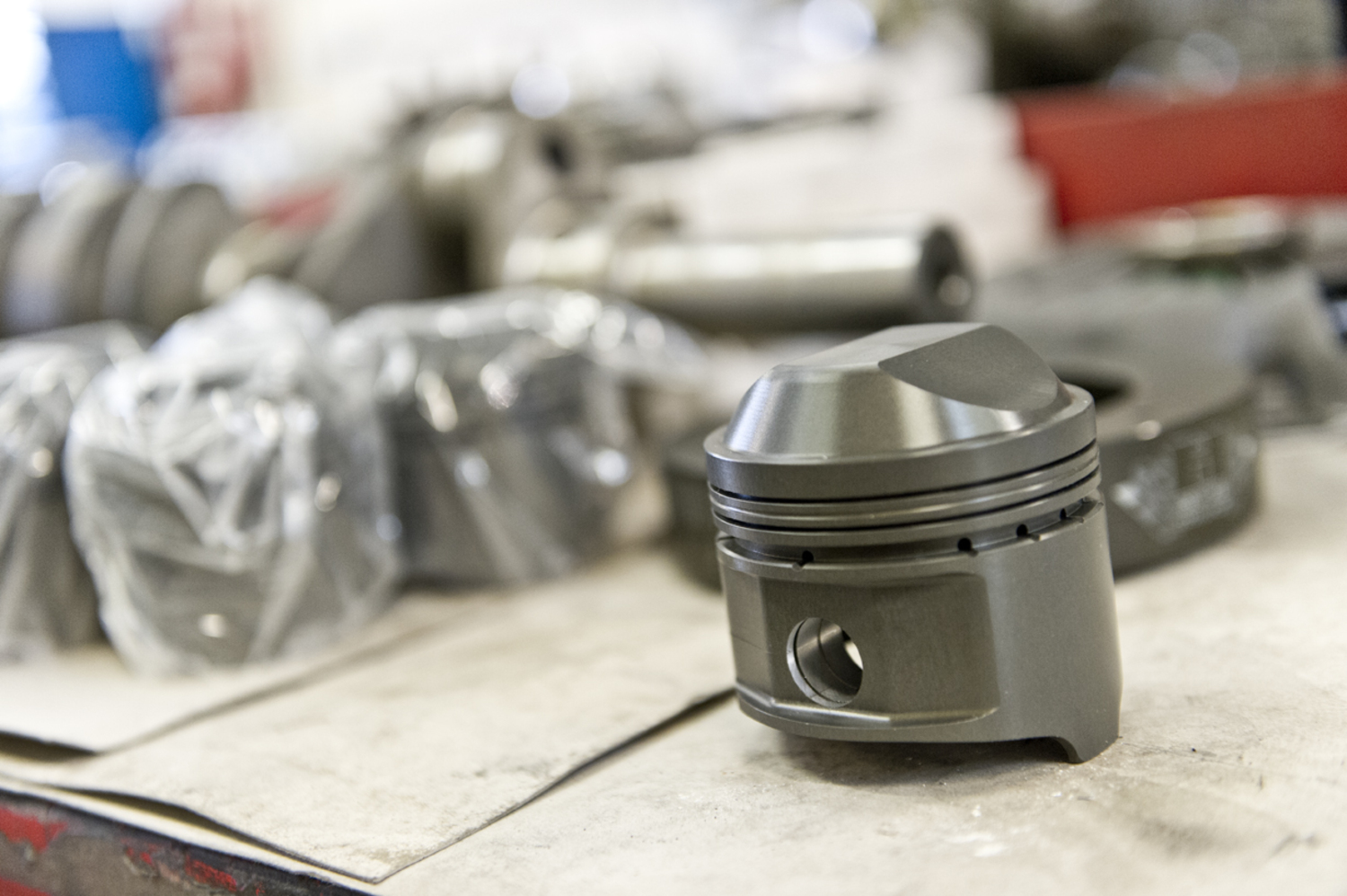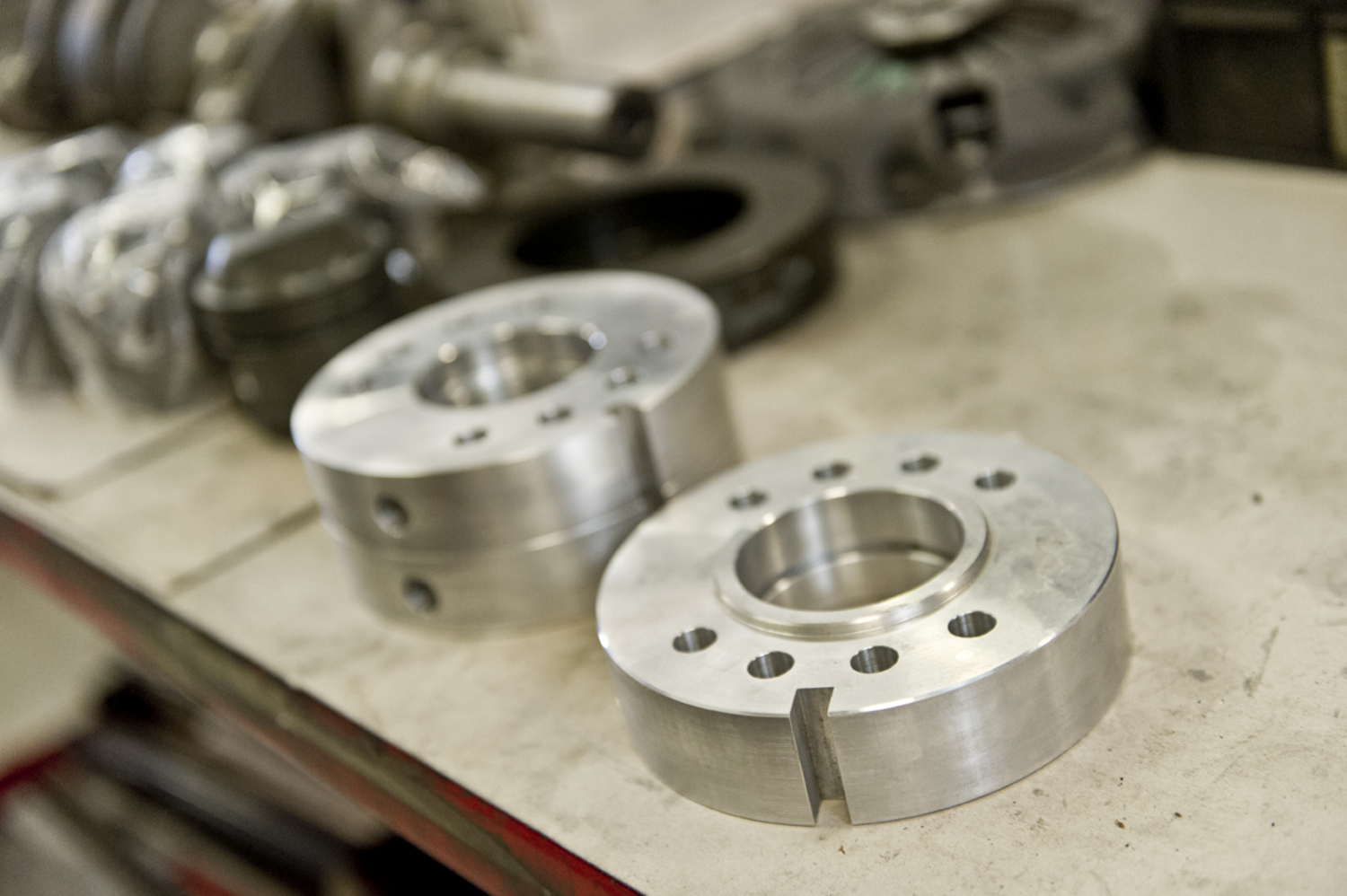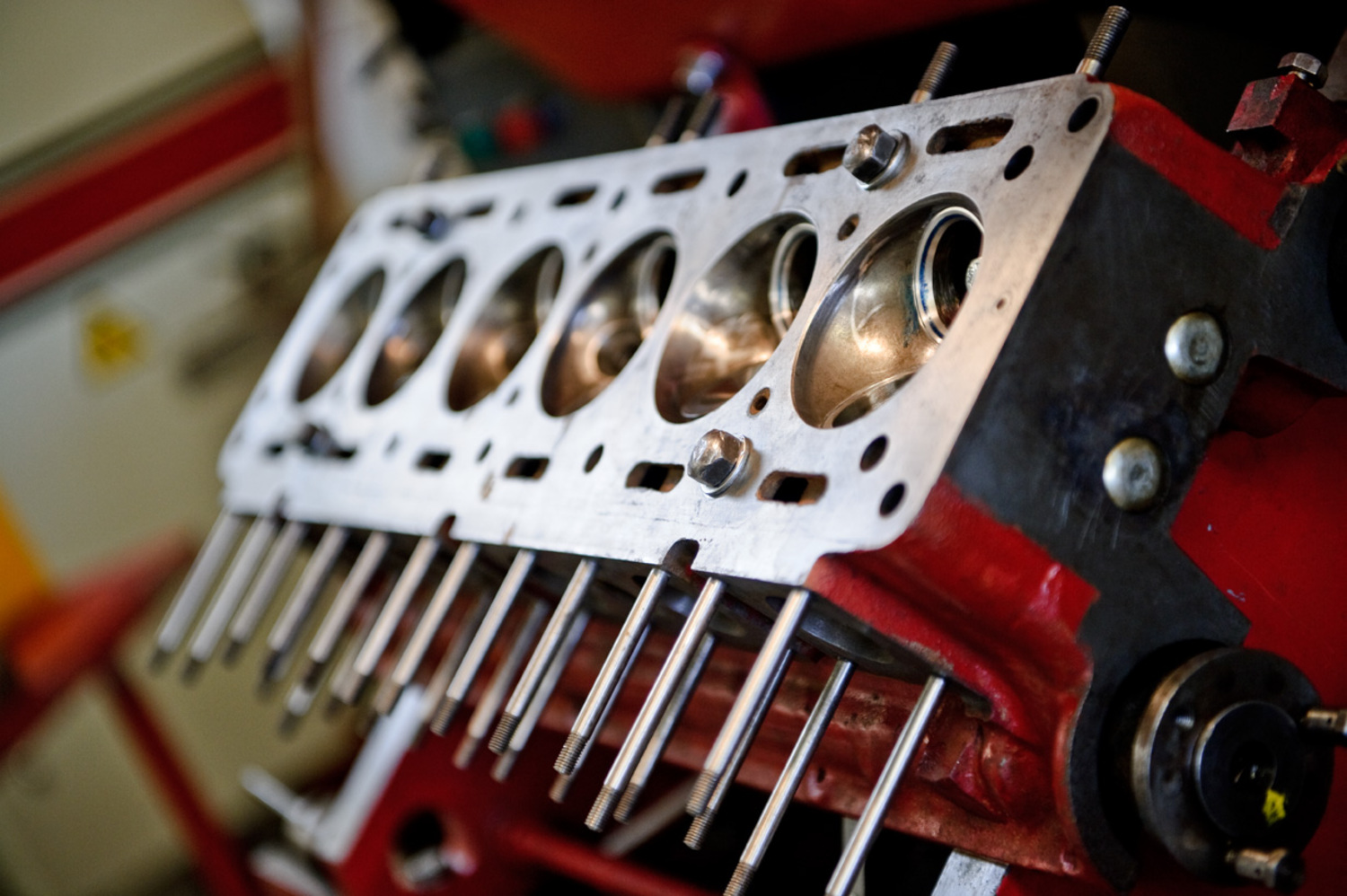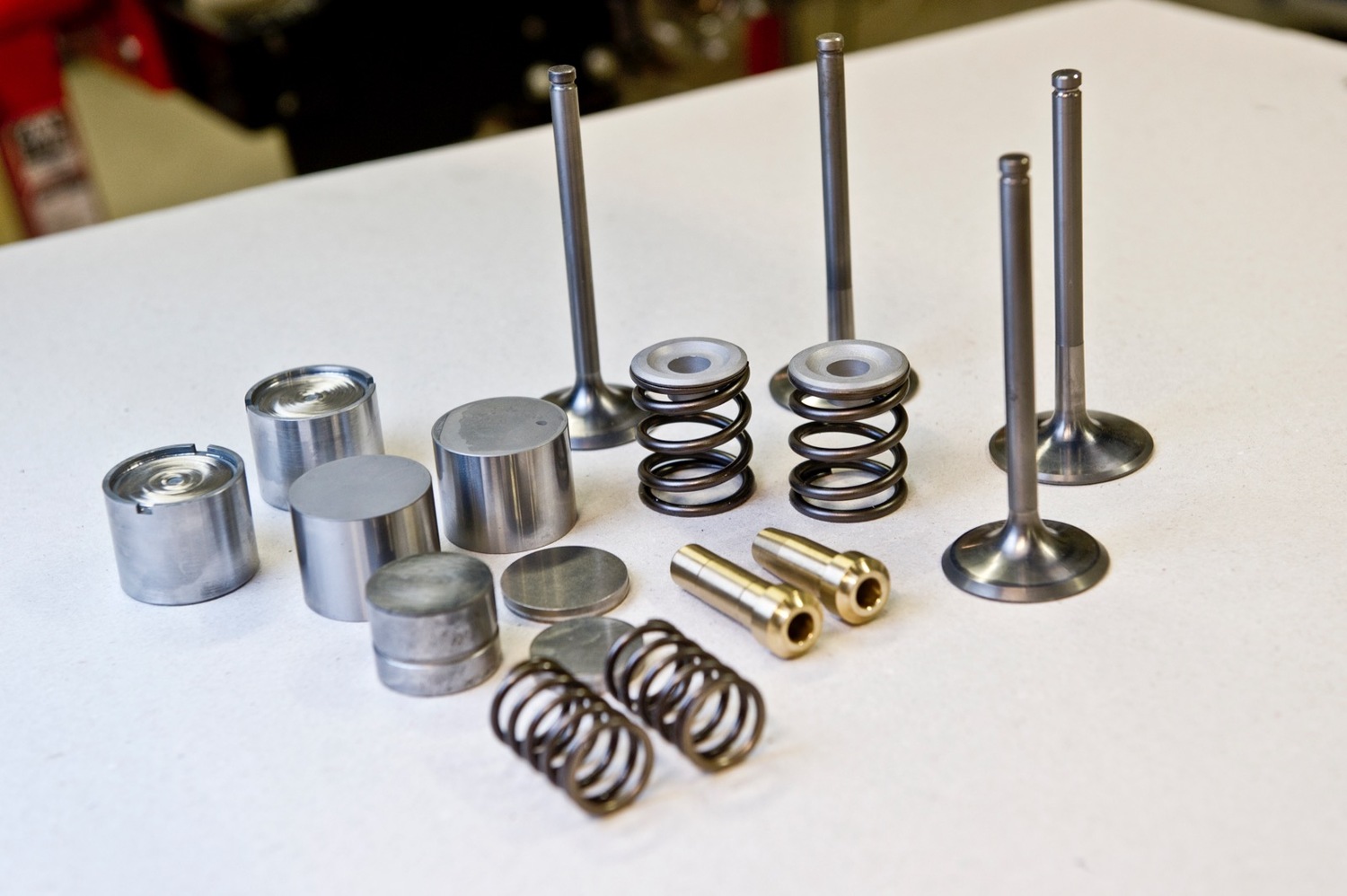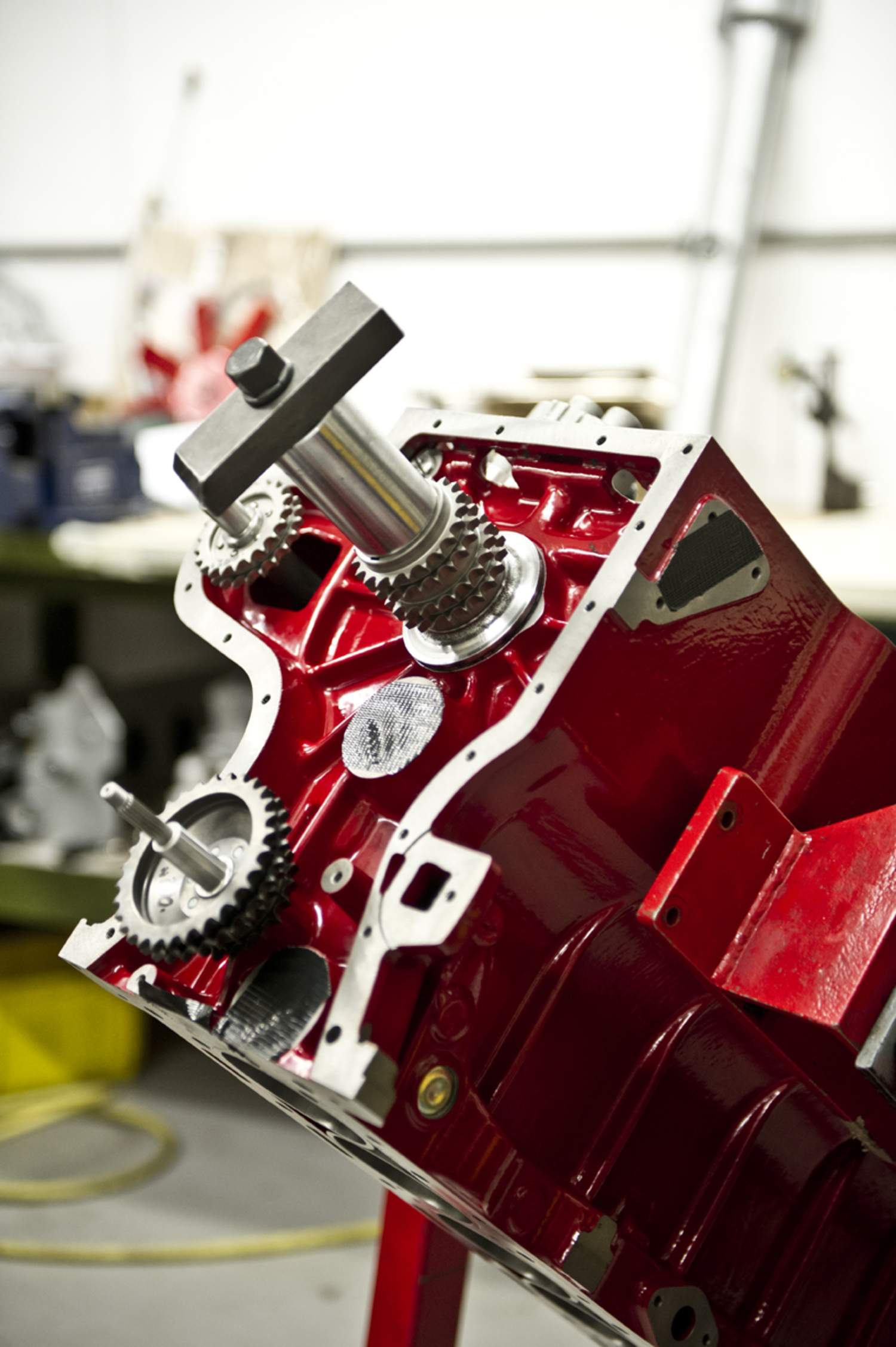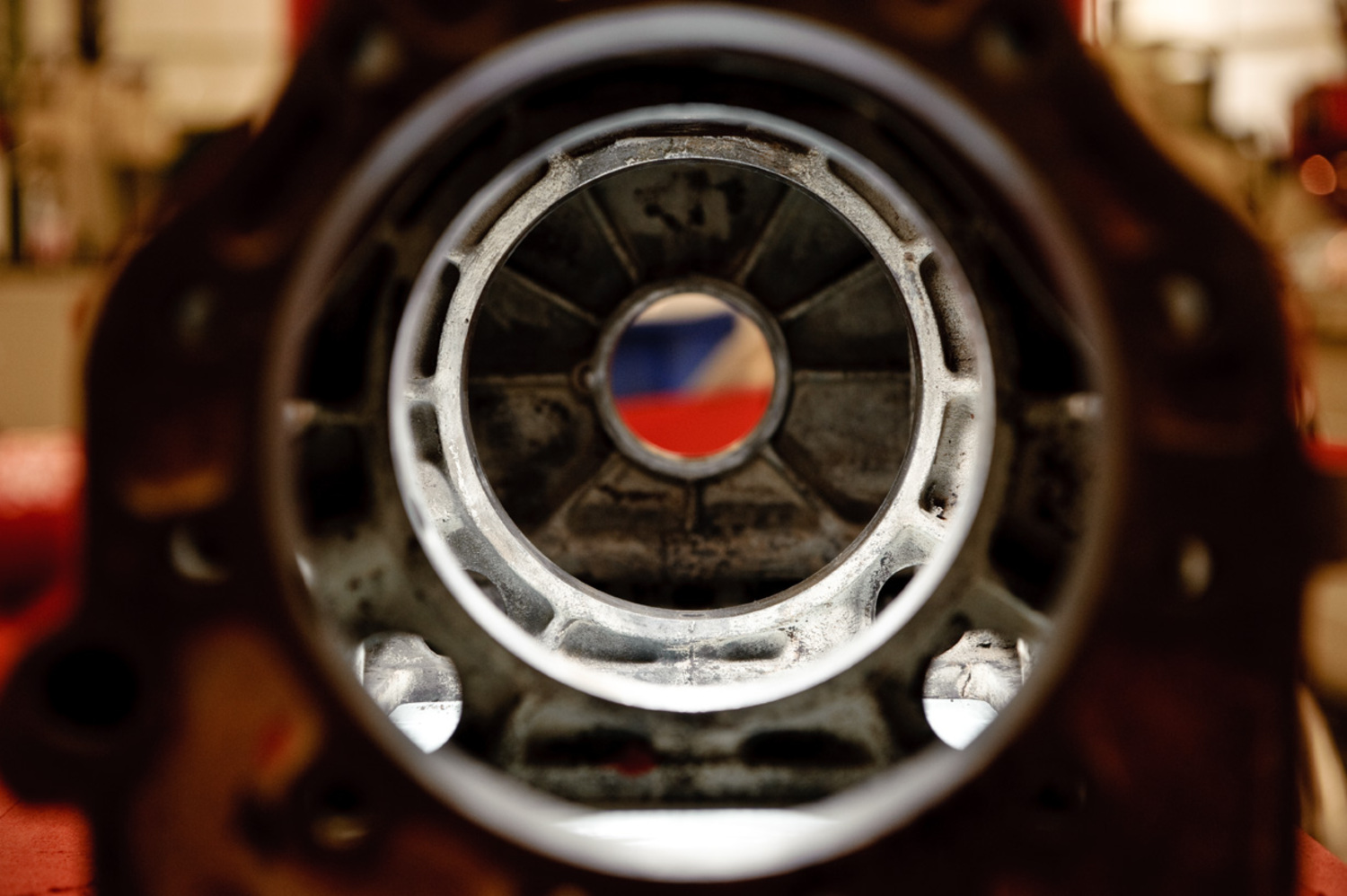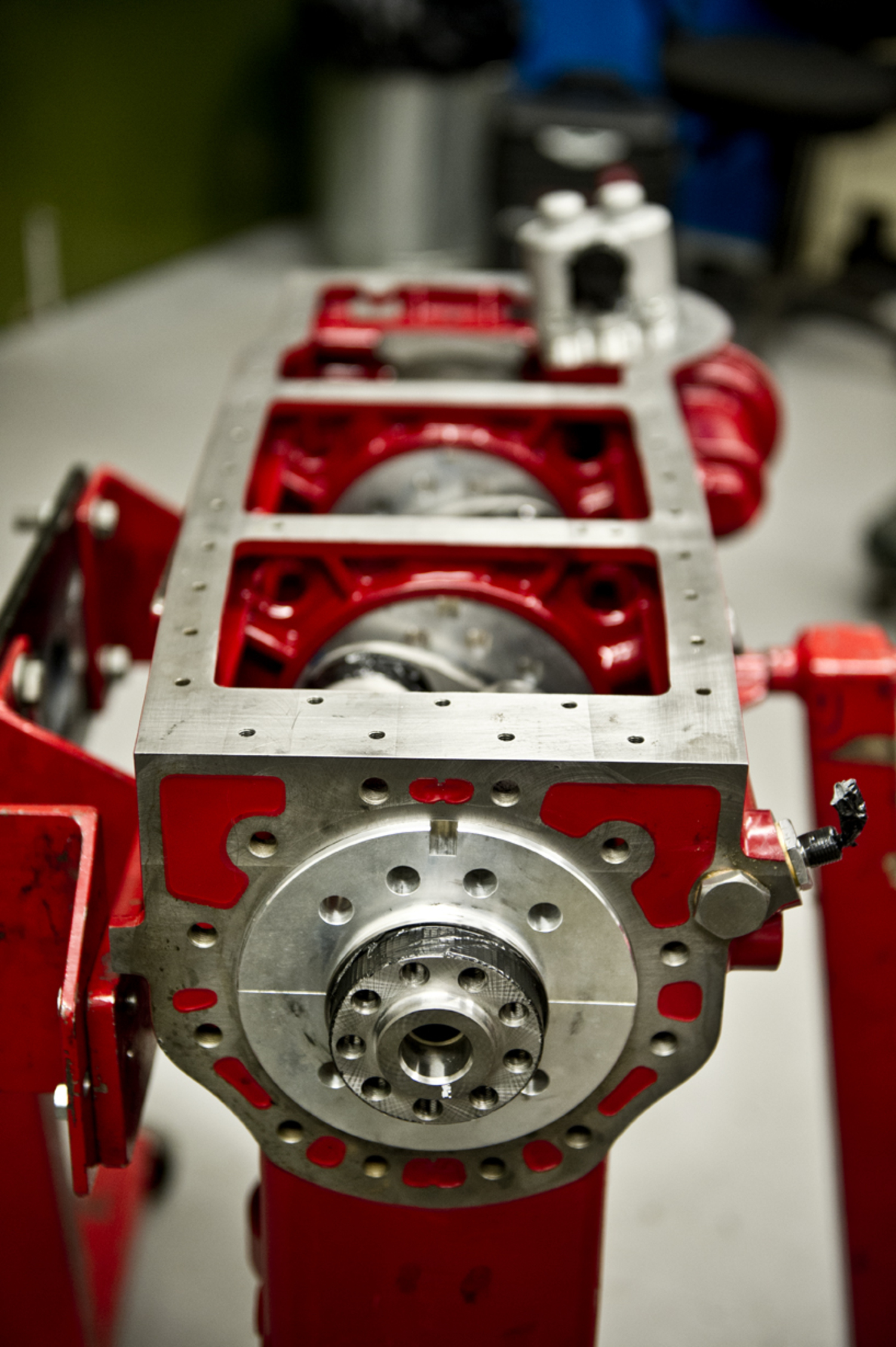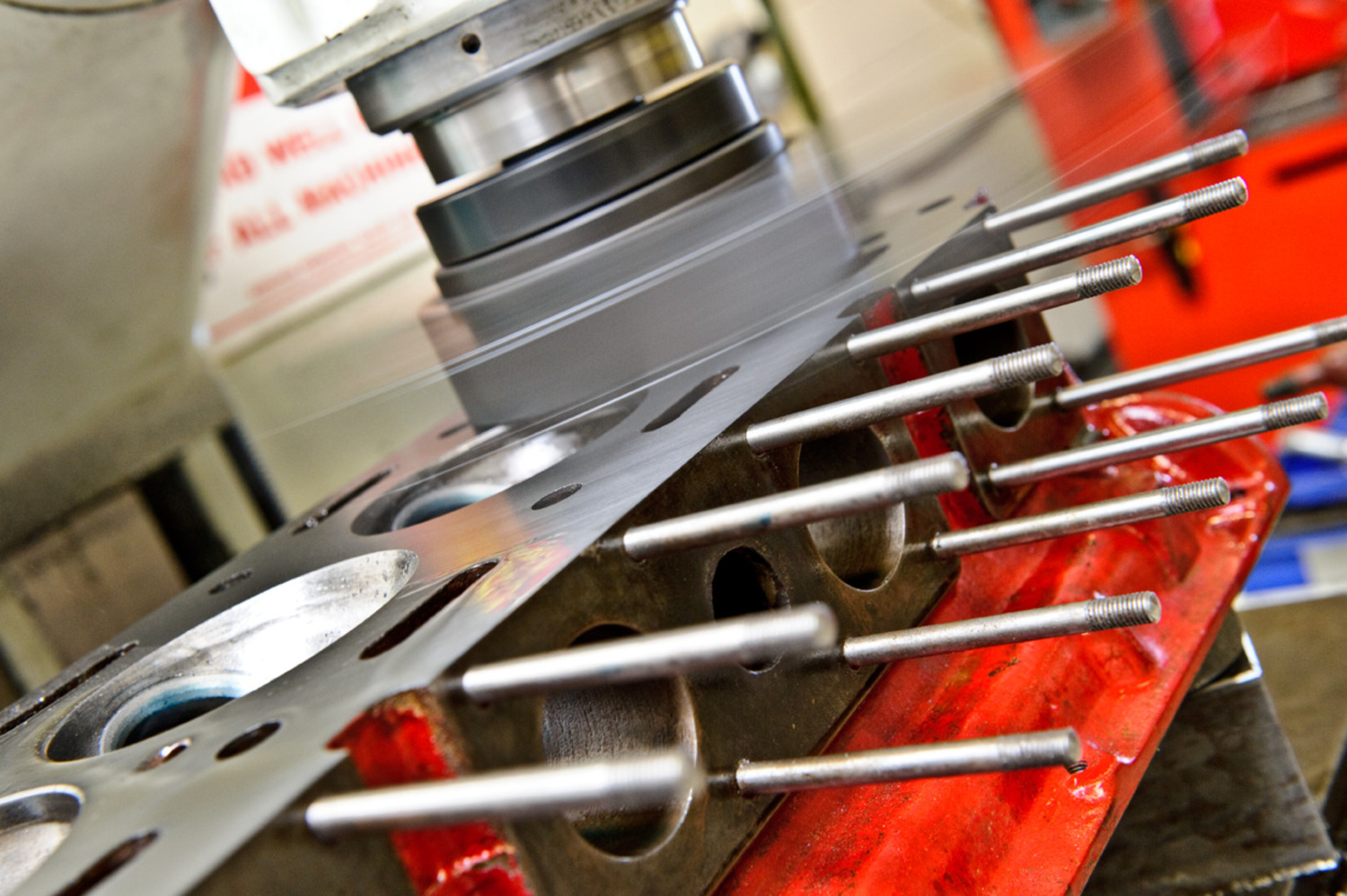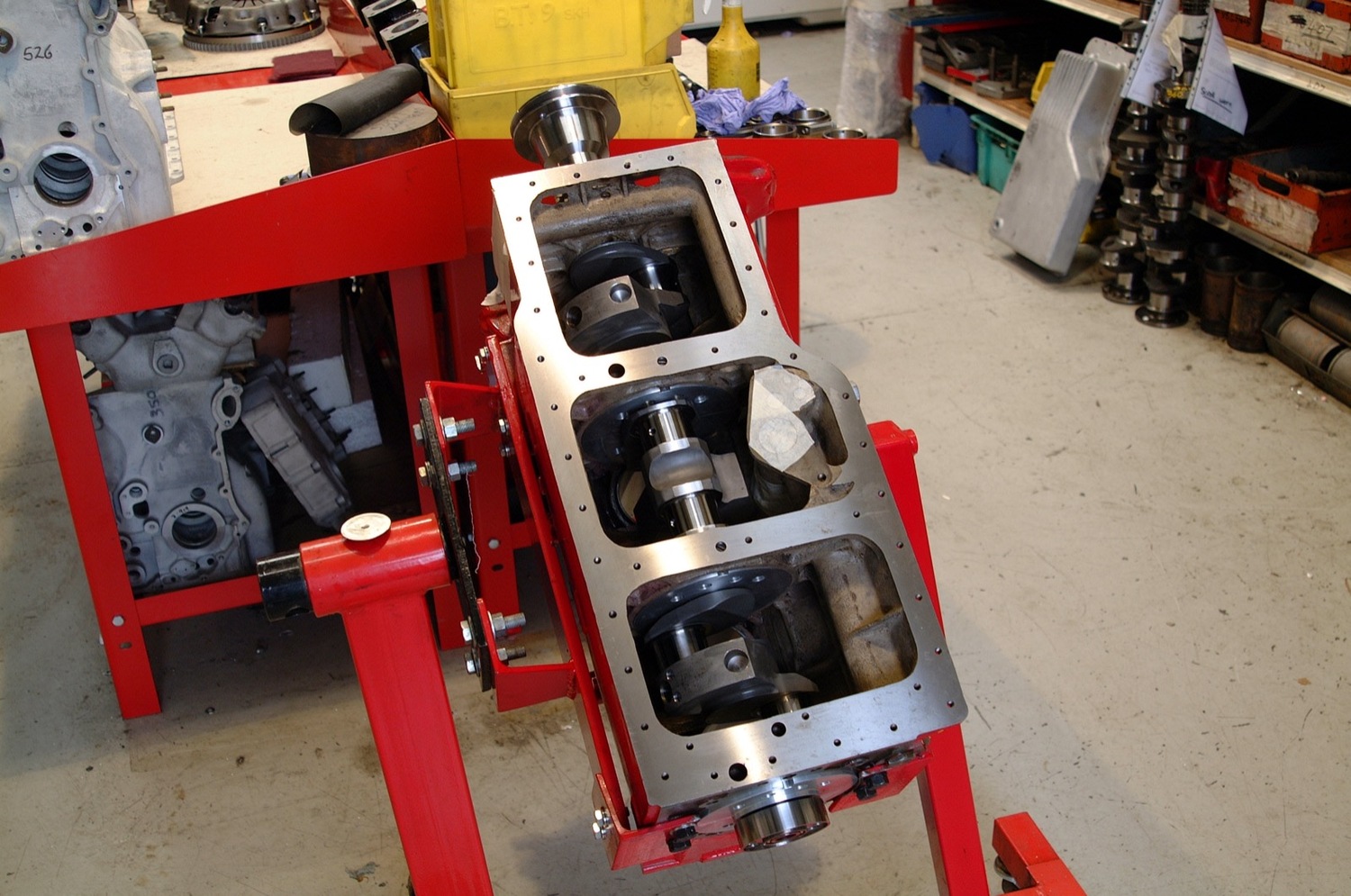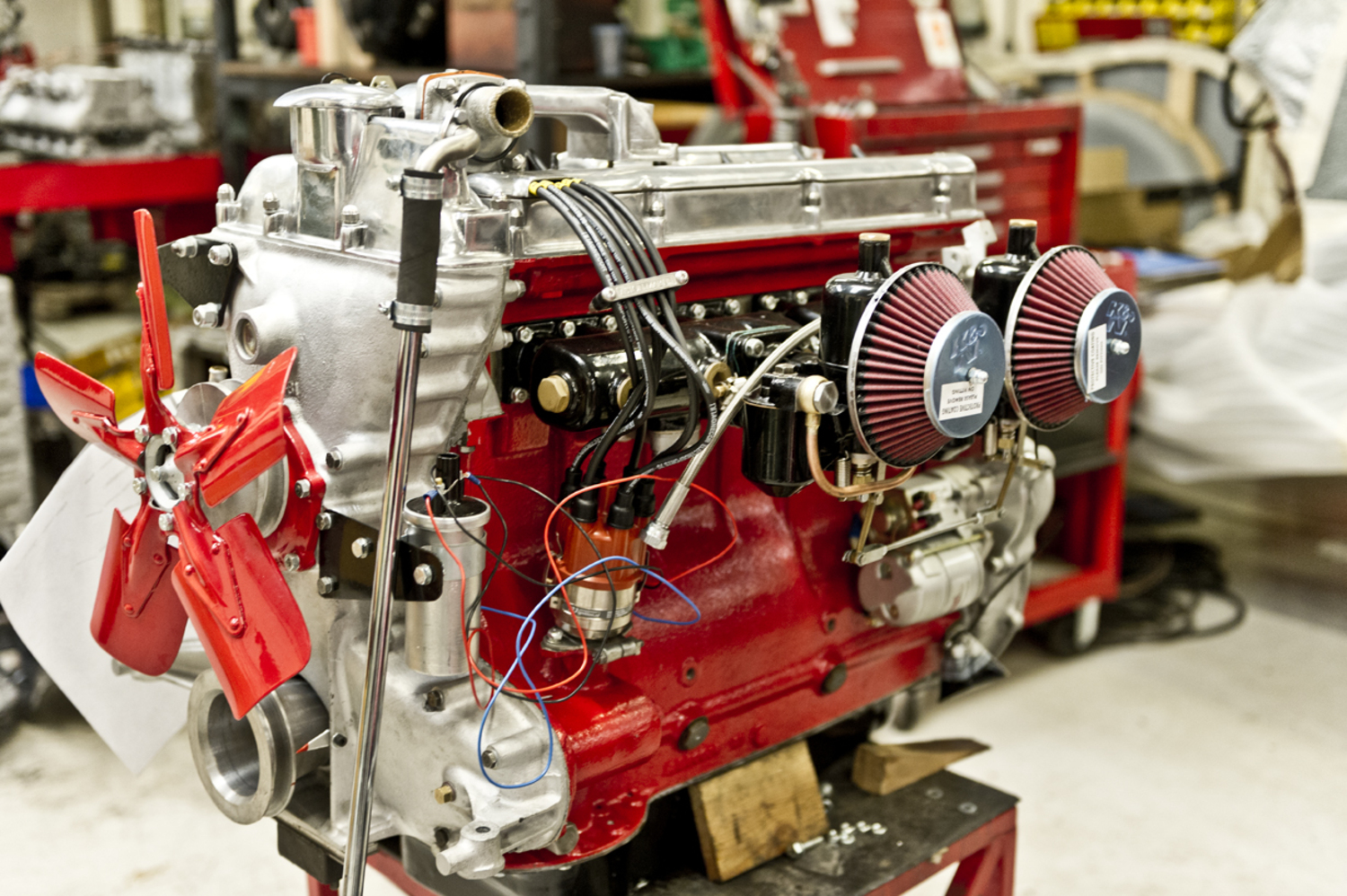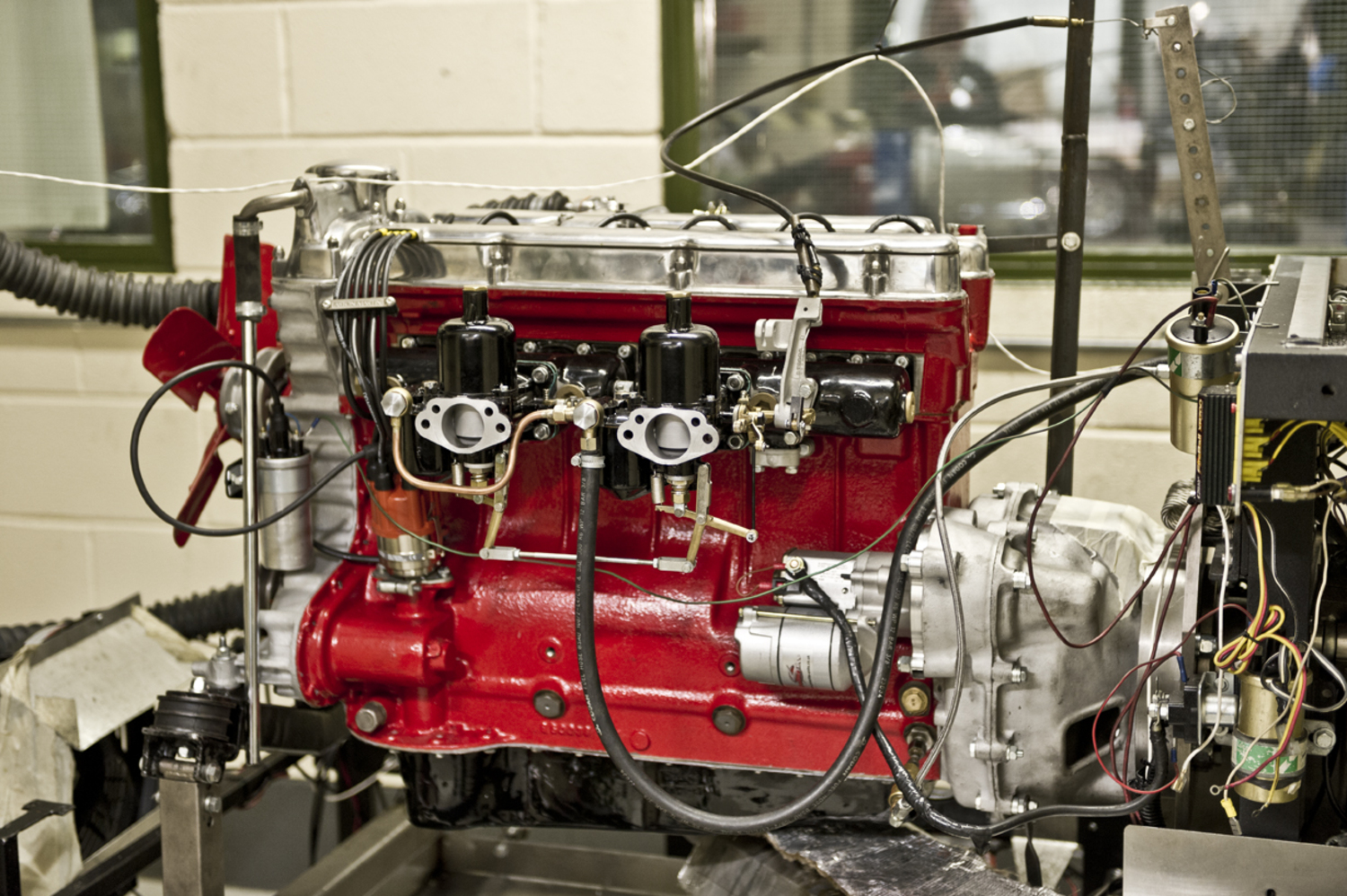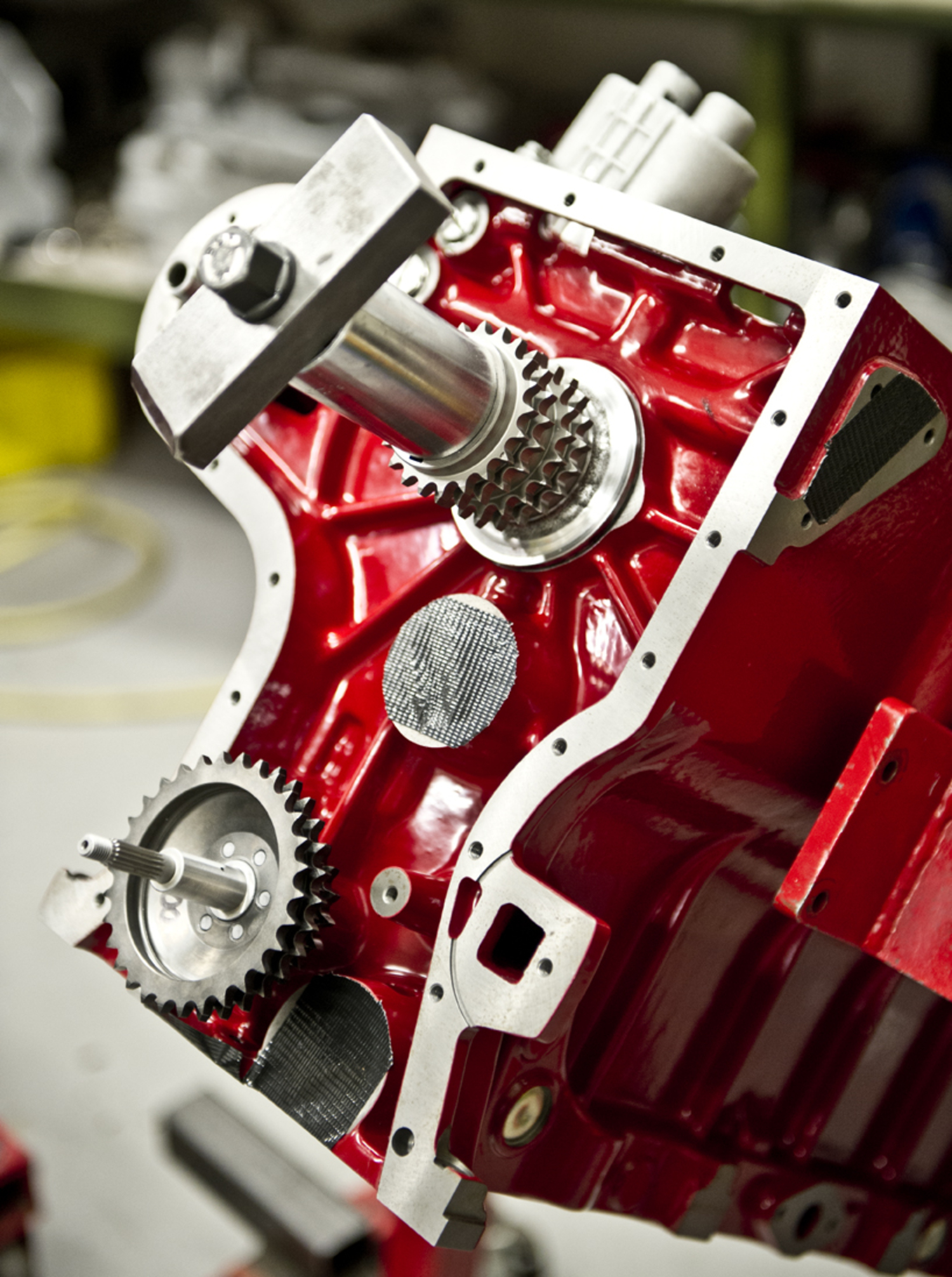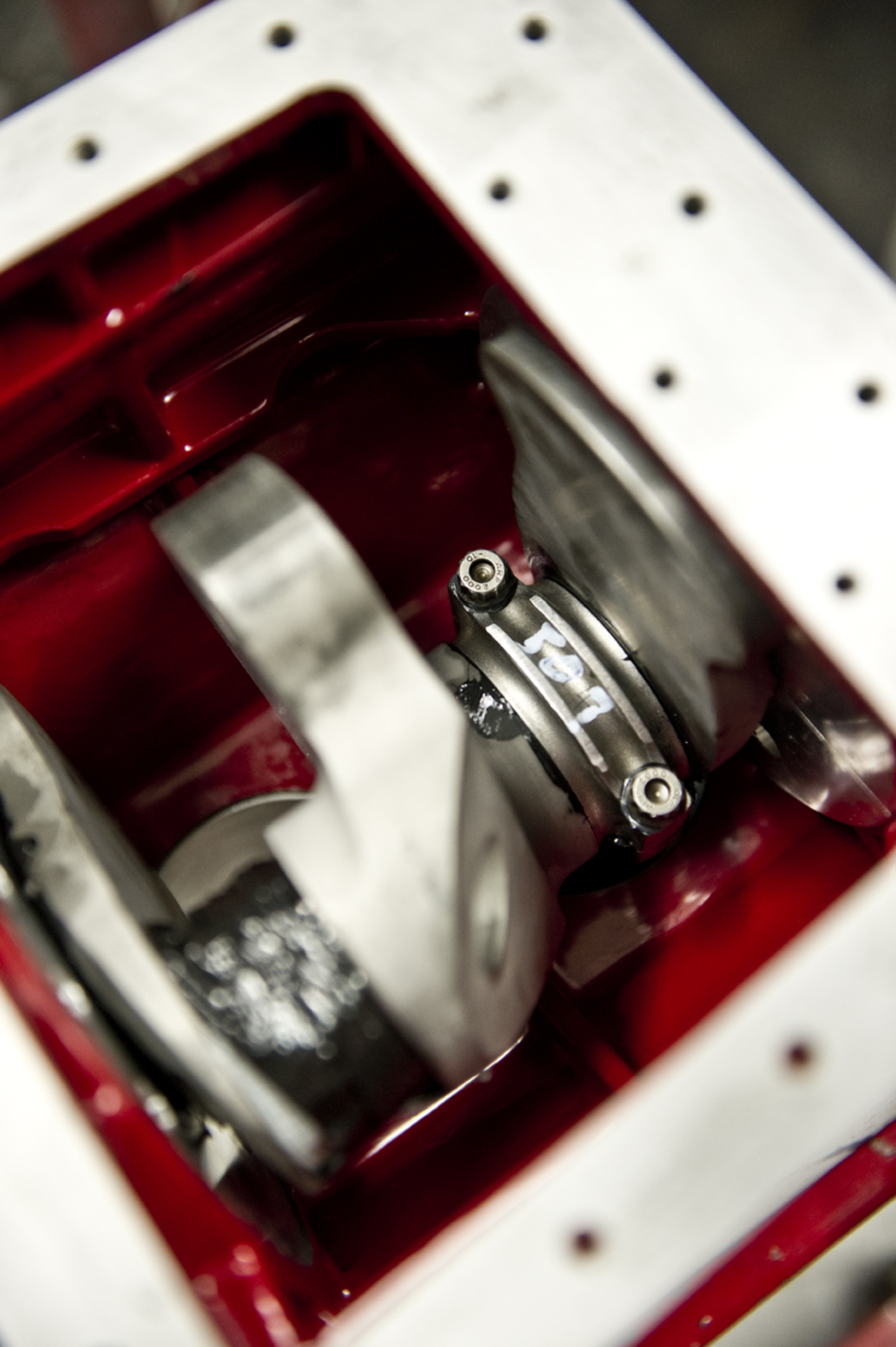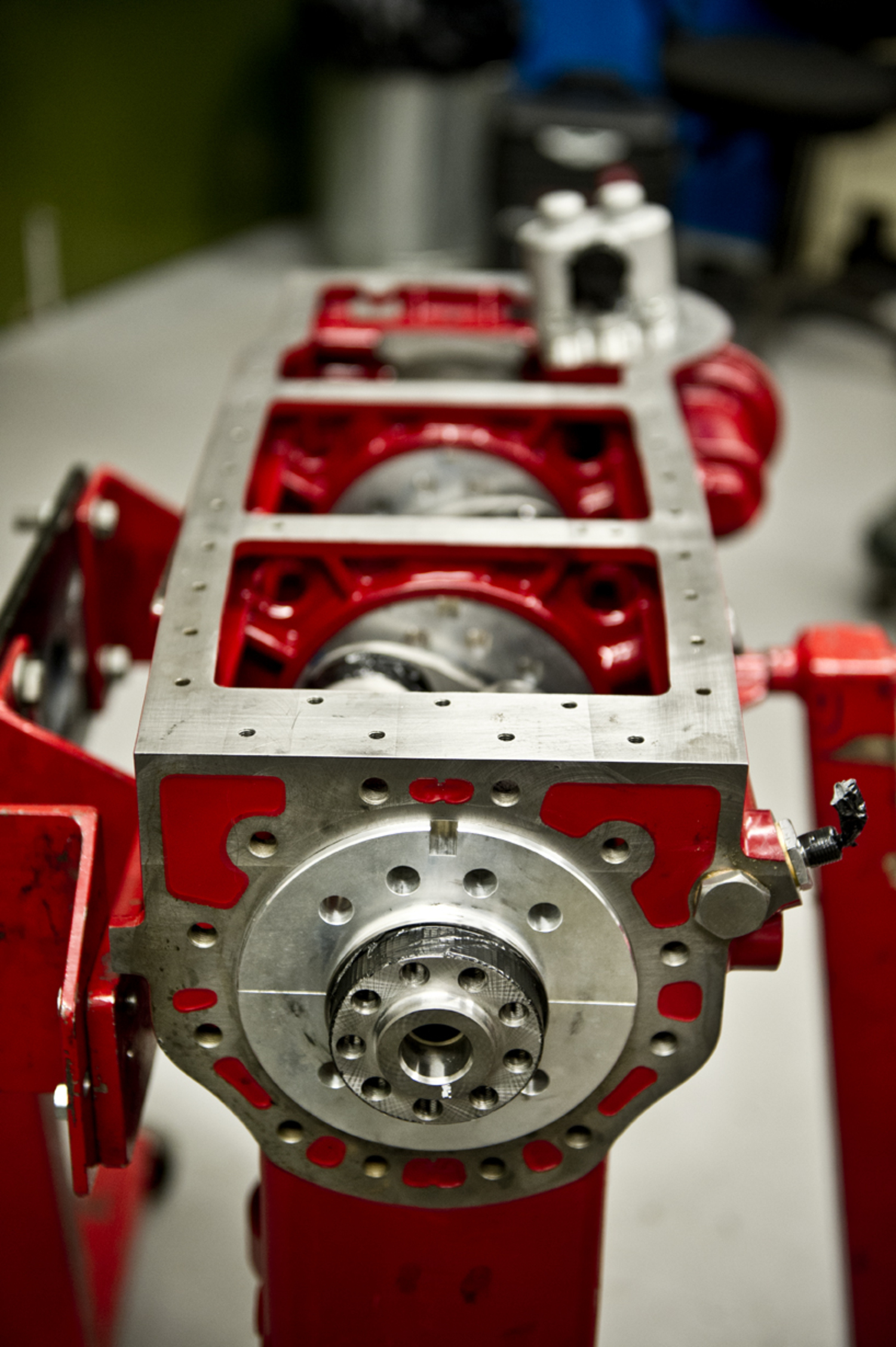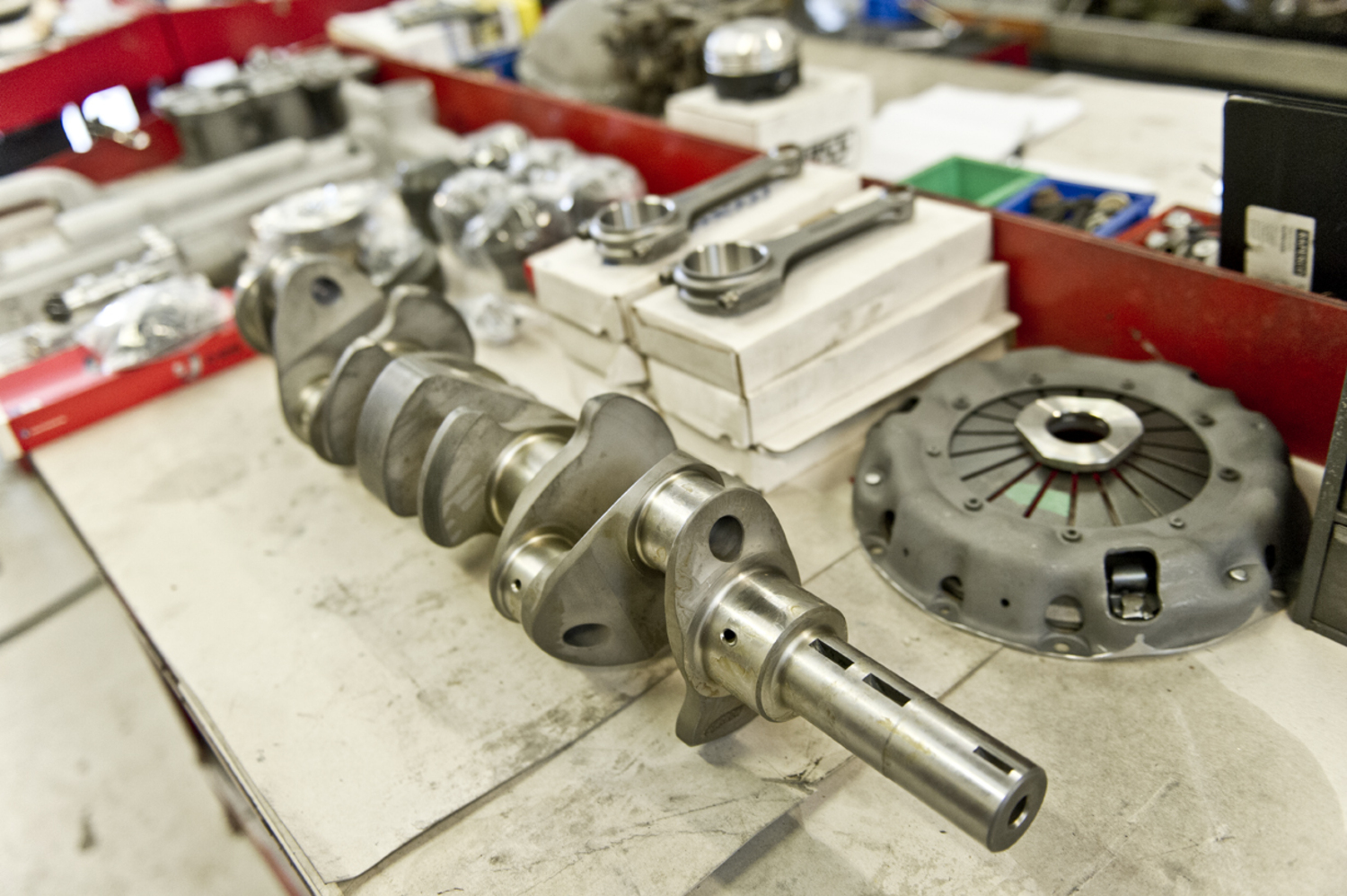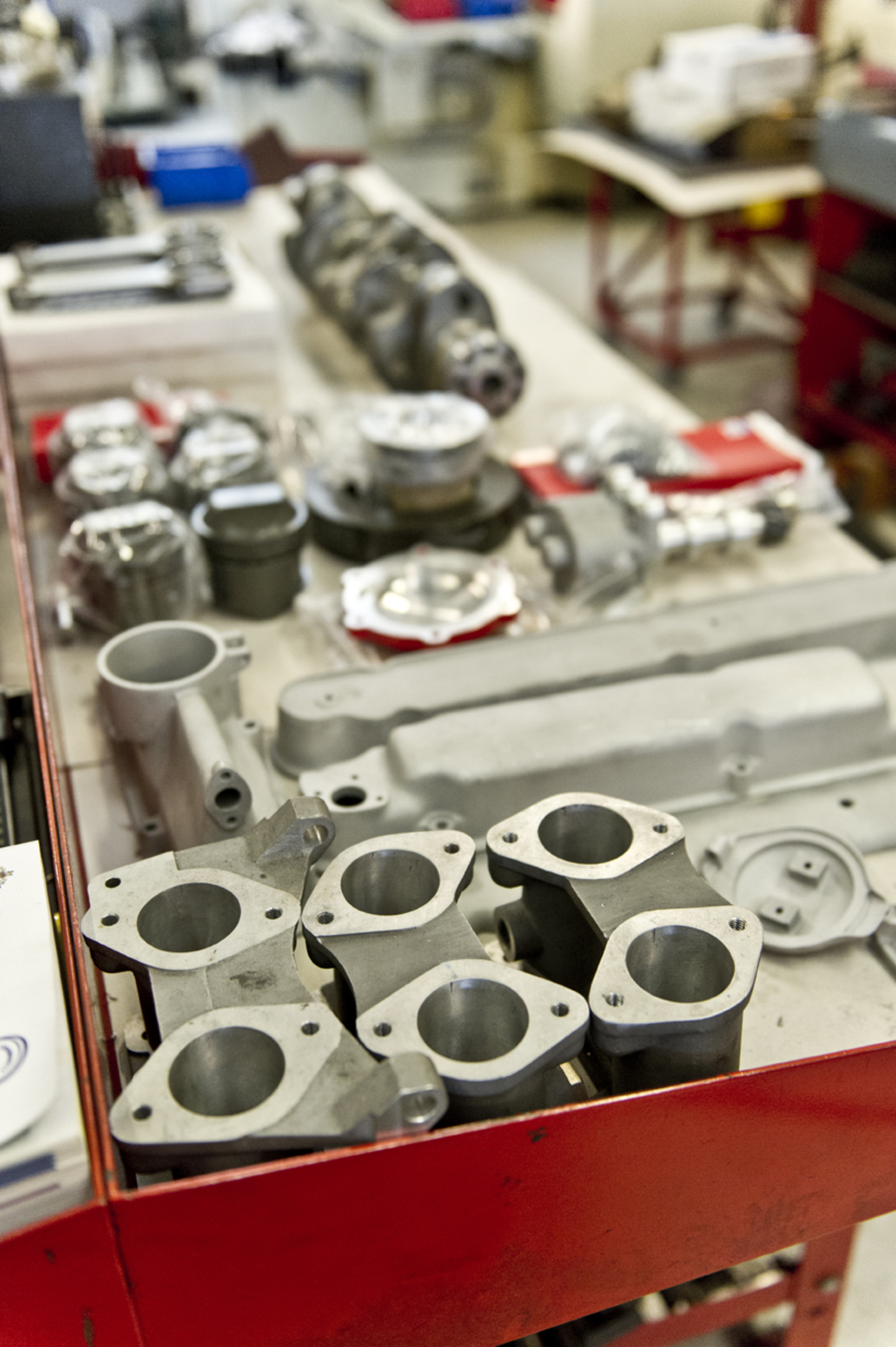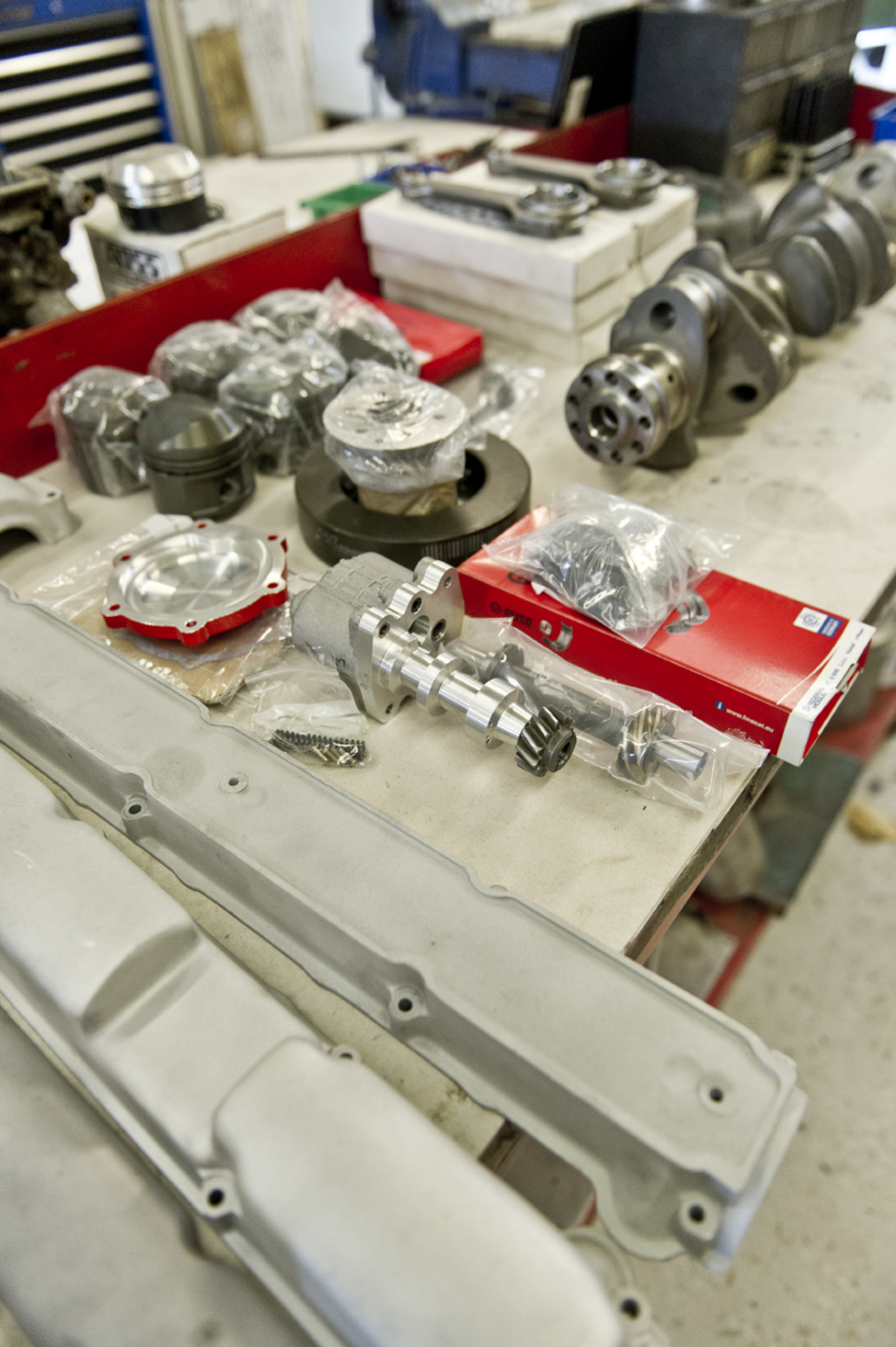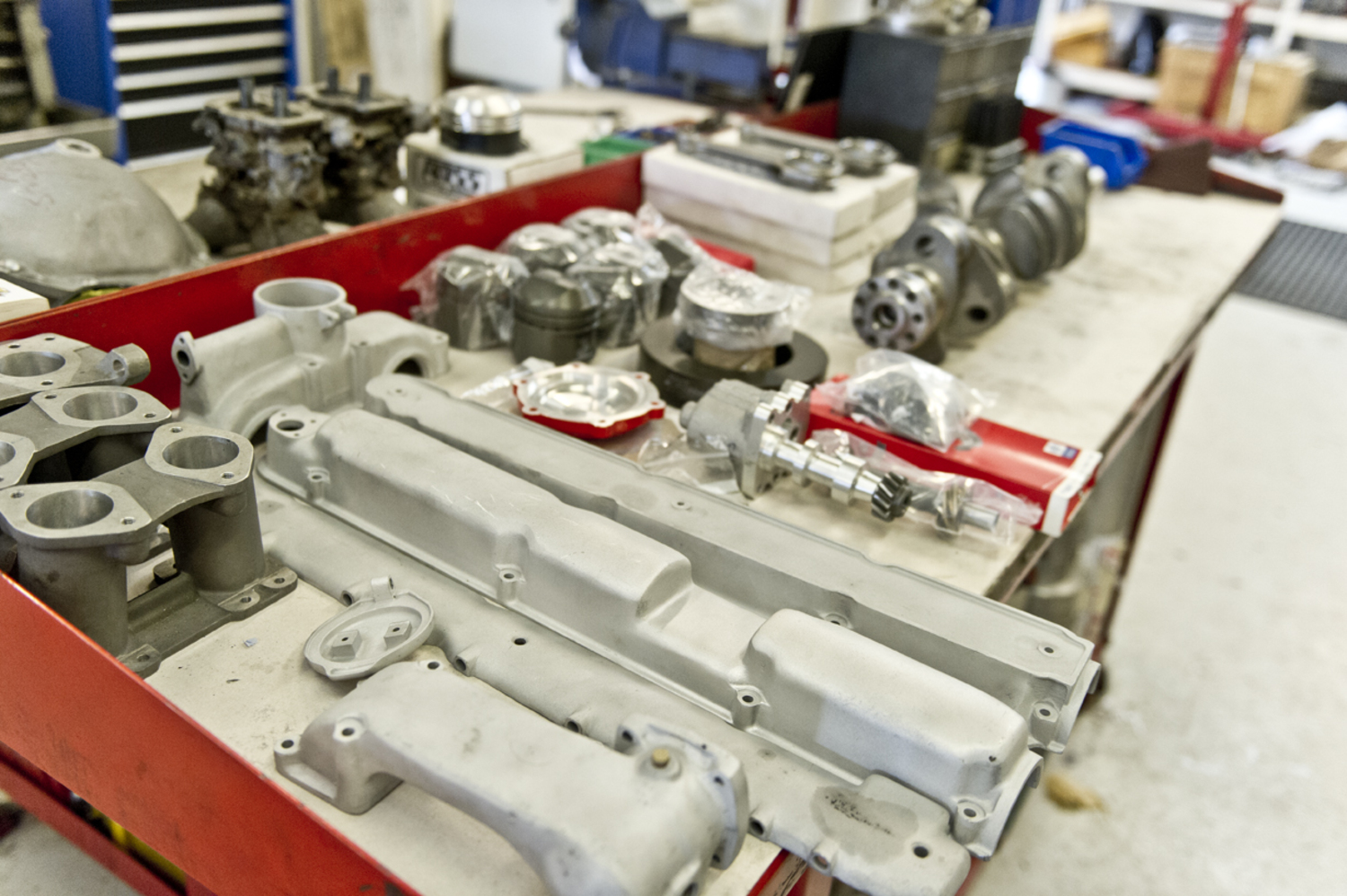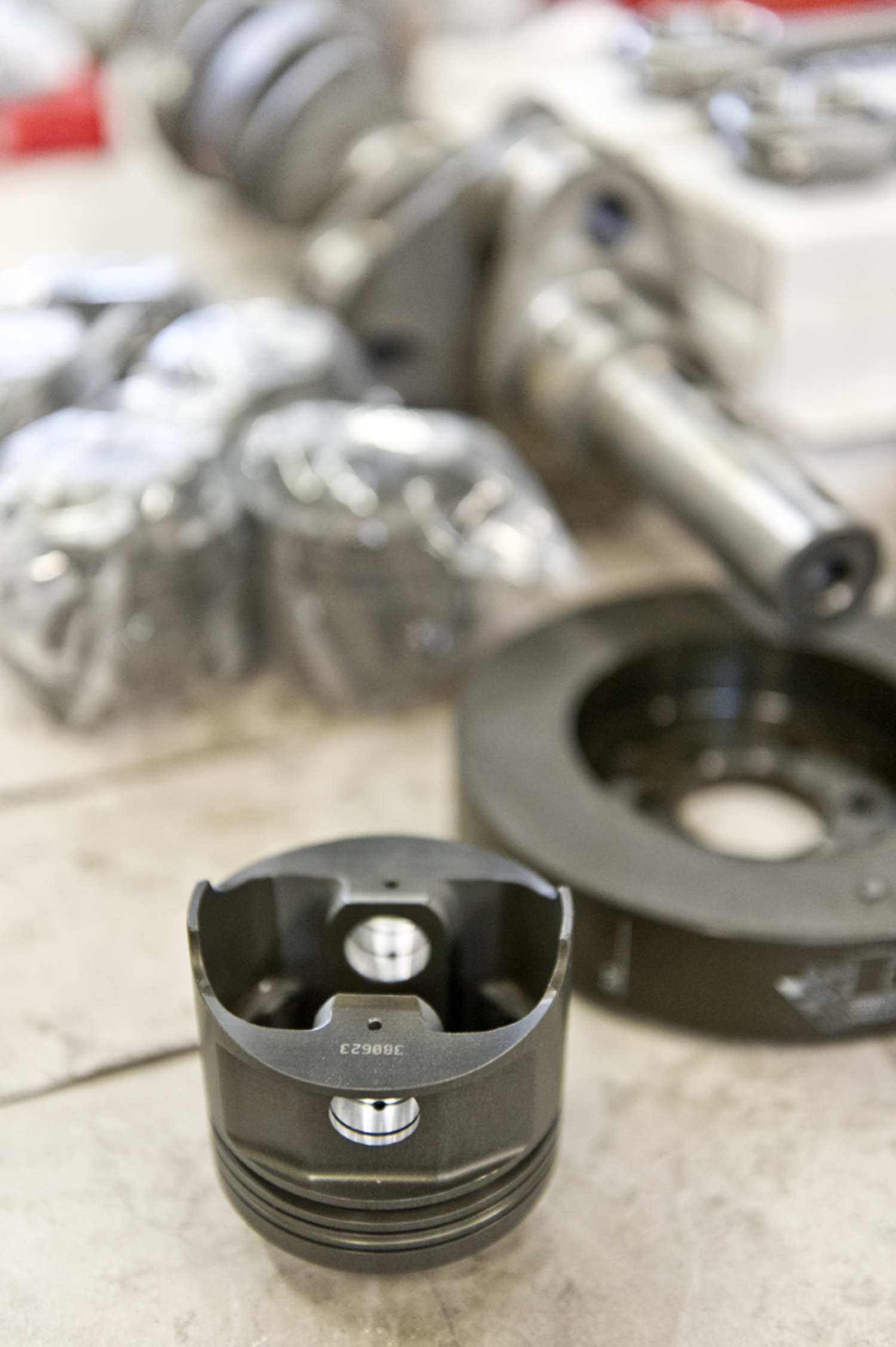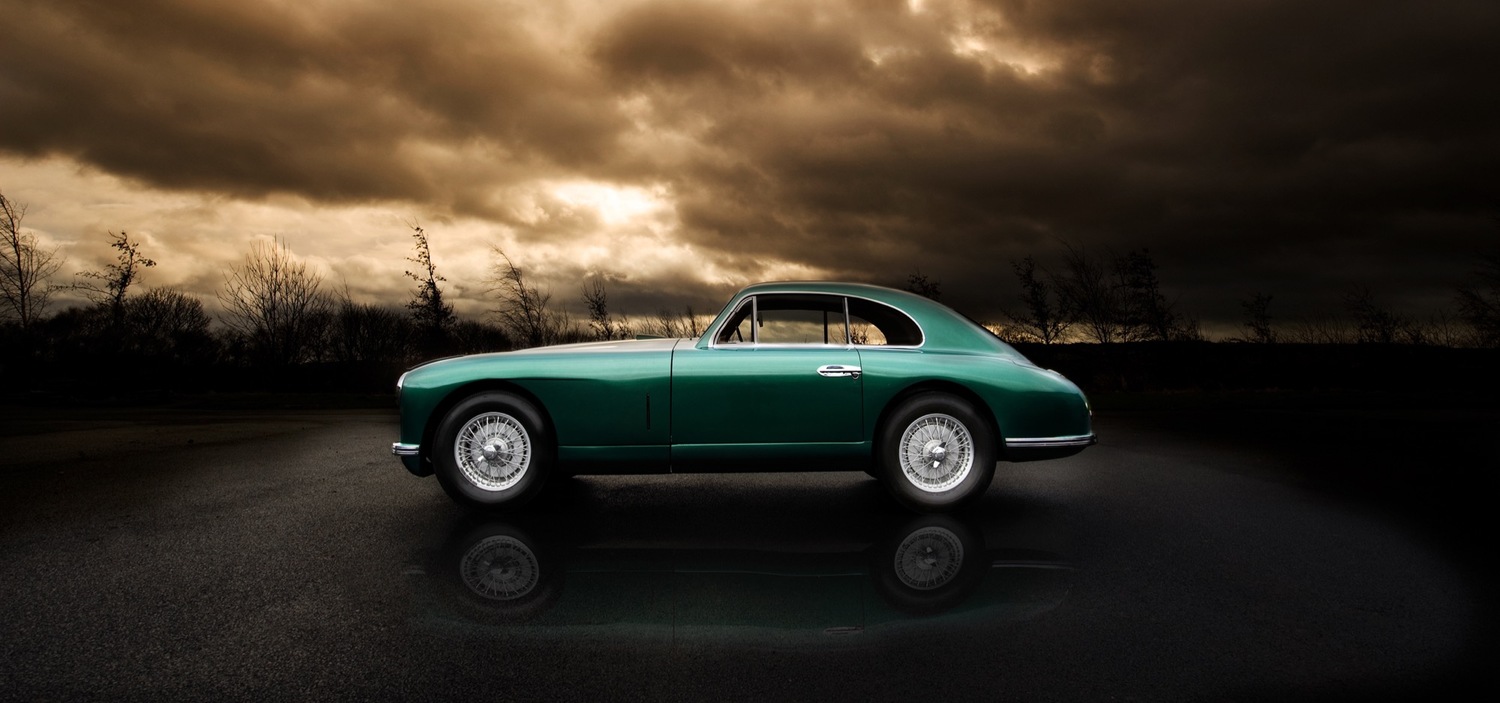
The W.O.Bentley designed Aston Martin/Lagonda Straight-6 engine powered the DB2, DB2/4 and DB MkII Aston Martins, as well as Saloons and Drophead Coupes wearing Lagonda badges. An innovative design that powered the vast majority of Feltham-Era Aston Martins, the W.O.Bentley Straight-6 engine is well known to Aston Workshop; our one-of-one 1954 DB2/4 Vignale carries a fully rebuilt 2.9L variant.
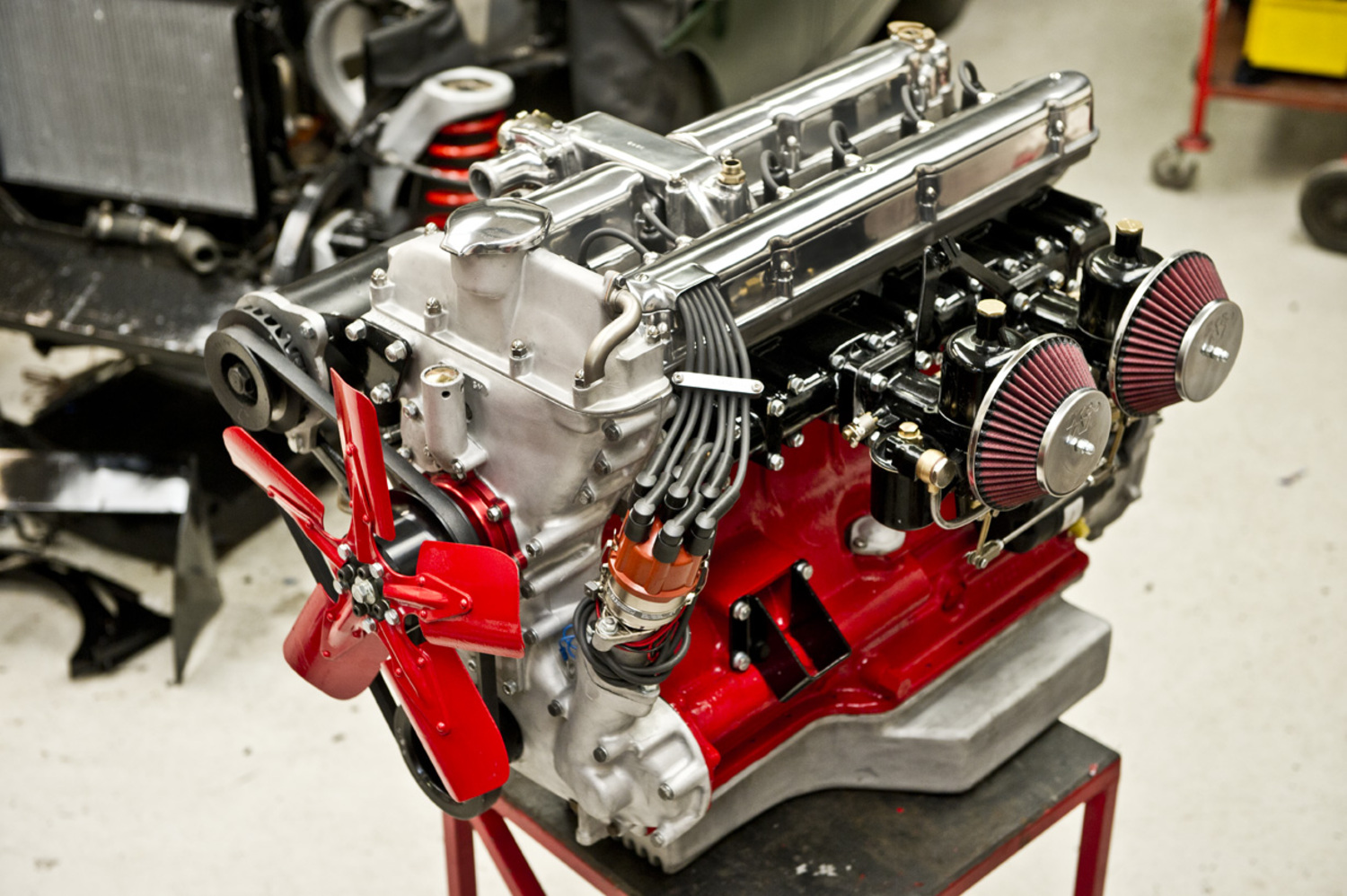
The Return to Six Cylinders
The design origins of the engine used in the Aston Martin DB2 lie with Lagonda Motors. The design dates from late 1939 at a time when the company, under the chairmanship of Mr Alan Good, realised that car production would have to be discontinued during the war years while company production capabilities were redirected in support of the war effort. Nevertheless, some spare capacity was available and having a concern for continuing car production after the war, decided to authorise the design and development of an all new 2.6 litre 6-cylinder engine, with twin overhead cams and with a high specific power output. This development was entrusted to the engineering director W.O.Bentley.
When Aston Martin Ltd was put up for sale in 1947, the purchaser, Mr David Brown also identified the sale of Lagonda Motors, its car designs and design team. This included the design rights to this new 2.6 litre 6 cylinder engine, which he had identified as the best engine that was available for his new Aston Martin DB2. Accordingly these designs were then integrated and carried forward into the future design of his DB2 sports car. The engines were specified with twin H4 SU carburettors. The DB2 engine initially developed 105 bhp at 4500rpm with a compression ration of 6.00 to 1 to ensure compatibility with the low octane petrol available in those times. The DB2 car with its new engine was launched in late 1949 and the DB2 entered production in early 1950. The details of the engine specification and its performance and the major steps in its design evolution follow.
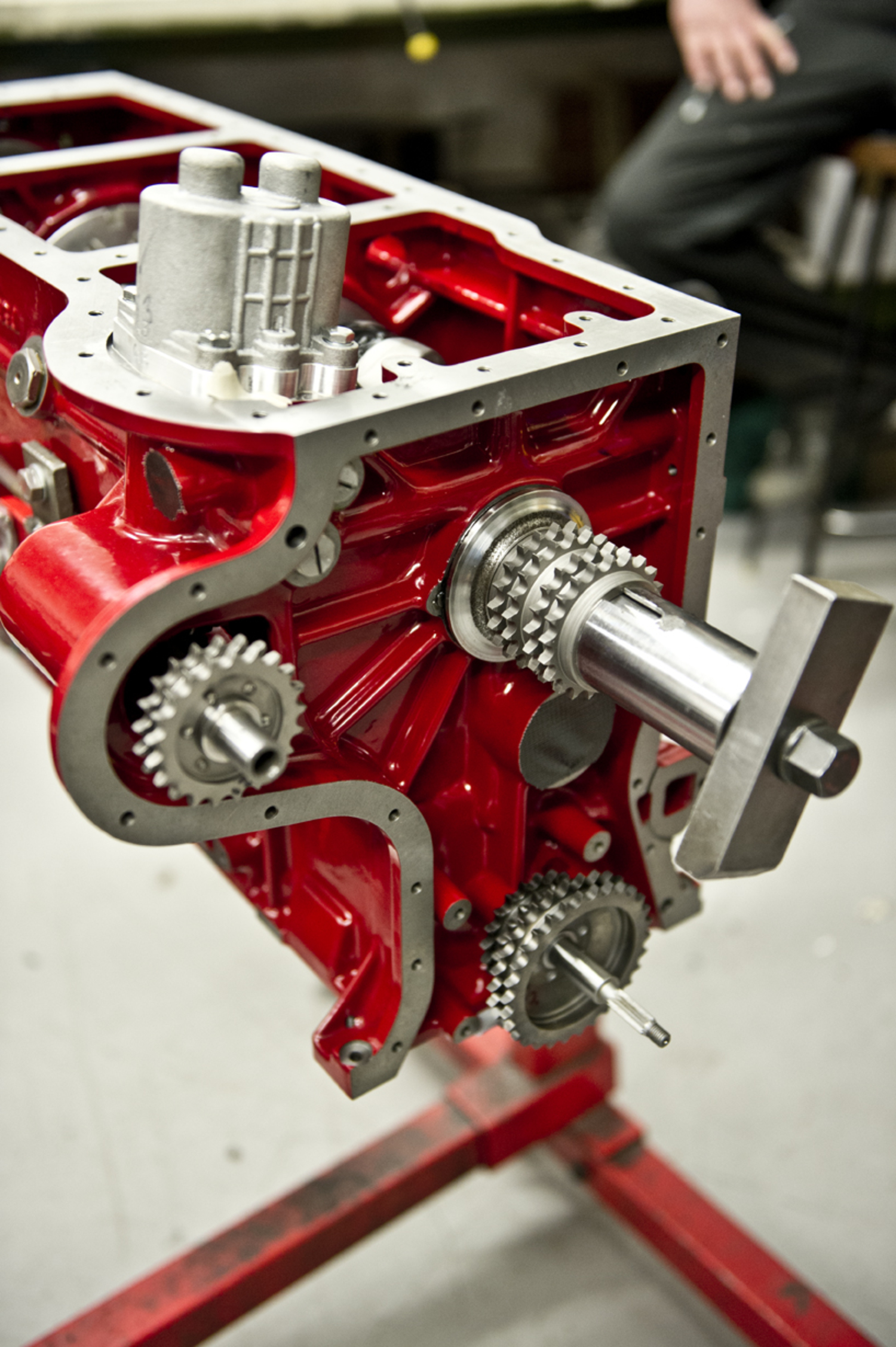
The DB2 Engine Design
In common with the way W.O.Bentley had designed his Bentley 3 litre engine, the engine configuration chosen used a barrel type crankcase with wet liners and a detachable cast iron cylinder head with hemispherical combustion chambers and twin overhead camshafts. The crankcase design was and remains a most unusual design feature. In this design, 3 of the 4 crankshaft main bearings are held within a pair of semicircular aluminium castings. Each pair of castings are fitted with main bearing shells and when bolted together, are then inserted in conjunction with the crankshaft into the crankcase. Each pair of segments are then located within a circular barrel type housing in the crankcase. Being cast aluminium, the differential expansion of the aluminium segments within the cast iron crankcase was designed to ensure that the crankshaft would be rigidly secured within a torsionally stiff crankcase, the aim being to create an engine of real refinement suitable for use in a new Lagonda.
In other respects, the engine design conformed to more common practice, with chain driven camshafts driven off the front of the crankshaft, a gear type oil pump being fed from a reservoir of oil in the engine sump. The wet piston liners were cast steel and bottom seating. The cylinder head featured twin overhead cams. Valve clearances were set by grinding the length of each valve stem, a design feature carried over into the DB4 engine.
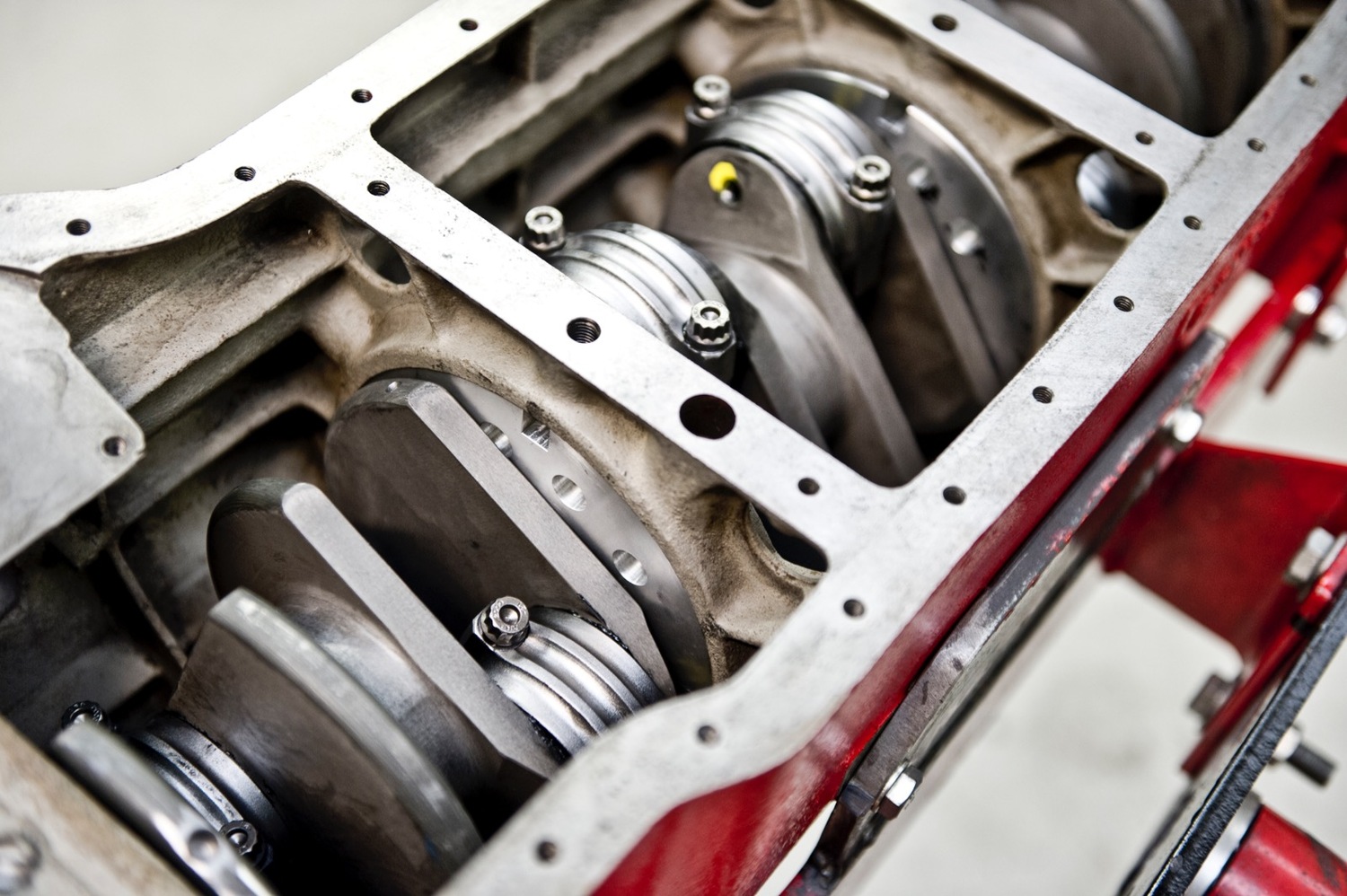
Development of the DB2 engine
From the outset, the DB2 was campaigned in premier sports car racing, and in particular at the 24 hour race at Le Mans with considerable success. Racing was to continue being the predominant influence in the design evolution of the DB2 engine. The details of the engine specification and its performance and the major steps in its design evolution follow.
Introduced in the constant quest for more power and torque in 1952, an increase in engine capacity to 3 litres was achieved through an increase in the bore. To accommodate the enlarged diameter of each cylinder liner within the cylinder block, the liners were offset alternately left and right from the crankshaft centreline, the offset being accommodated by the connecting rods.
Through the influence of racing , higher performance variants of the production engines were made available to owners. The changes were not major, being confined to an increase in compression ratio, larger choke carburettors and modified valve timing. These became 'Vantage' specification engines, a label that became a trademark of to high specificiation Aston Martin engines.
